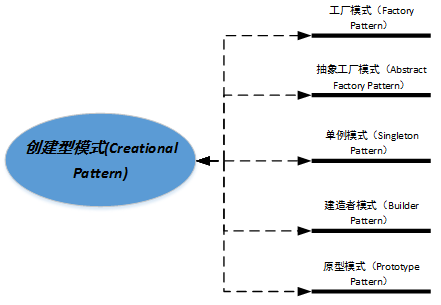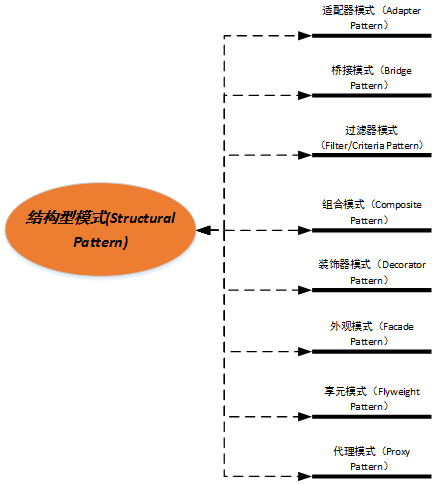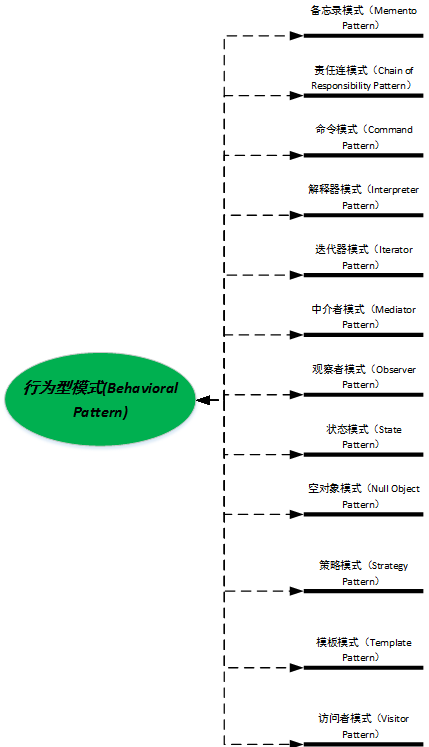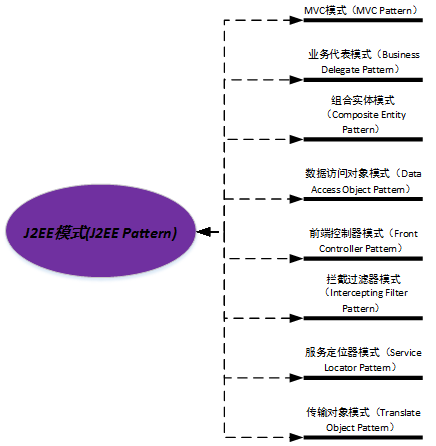背景

设计模式(design pattern), 是在这1994年,由 Erich Gamma、Richard Helm、Ralph Johnson 和 John Vlissides 四人合著出版了一本名为 Design Patterns - Elements of Reusable Object-Oriented Software(中文译名:设计模式 - 可复用的面向对象软件元素) 的书提出。主要基于:
- 对接口编程而不是对实现编程
- 优先使用对象组合而不是继承
面向对象系统的分析和设计实际上追求的就是两点,一是高内聚(Cohesion),而是低耦合(Coupling)。
1. 设计模式鸟览
常见设计模式有23种。大体可以分为三大类:
- 创建模式(Creational Patterns)
- 结构型模式(Structural Patterns)
- 行为型模式(Behavioral Patterns)
当然,还有J2EE设计模式。
| 模式 | 描述 |
|---|---|
| 创建模式 | 这些设计模式提供了一种在创建对象的同时隐藏创建逻辑的方式,而不是使用 new 运算符直接实例化对象。这使得程序在判断针对某个给定实例需要创建哪些对象时更加灵活。 |
| 结构型模式 | 这些设计模式关注类和对象的组合。继承的概念被用来组合接口和定义组合对象获得新功能的方式。 |
| 行为型模式 | 这些设计模式特别关注对象之间的通信。 |
| J2EE 模式 | 这些设计模式特别关注表示层。这些模式是由 Sun Java Center 鉴定的。 |
创建模式(Creational Patterns)

结构型模式(Structural Patterns)

行为型模式(Behavioral Patterns)

J2EE设计模式

Ref.
http://www.runoob.com/design-pattern/design-pattern-tutorial.html